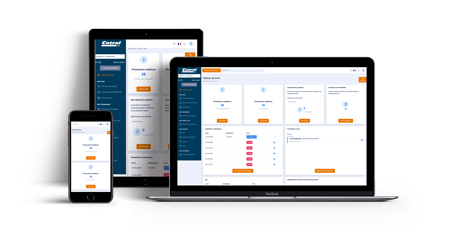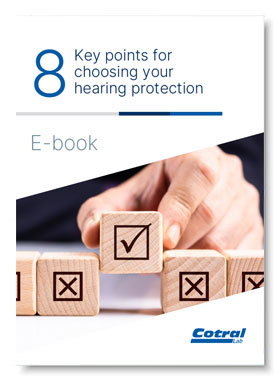Before deploying your hearing protection solution, it's essential to know what your employees' habits and needs are and how satisfied they are with their current hearing protection.
By understanding their specific issues and requirements, it will be much easier to raise awareness about noise risk, to engage your staff and to get them fully on board with your future anti-noise solution. And the best way of doing this is to conduct a company survey.

What needs are essential for your employees?
Comfort for effective hearing protection
Hearing protection is effective if it is worn 100% of the time when exposed to noise. If your employees feel discomfort, even if it is slight, they'll be tempted to take off their hearing protection. Acoustic trauma, auditory fatigue, acoustic shock... the risk of hearing loss increases considerably!
According to the standard EN 458, if one of your employees takes off their hearing protection for 2 minutes in an 8-hour day, their protection is 25% less effective. If they take it off for 2 hours, effectiveness drops by 75%! So it's critical that hearing protection is worn at all times when in contact with noise.
For this reason, comfortable hearing protection and the well-being that it induces are key points in your choice of anti-noise earplugs.
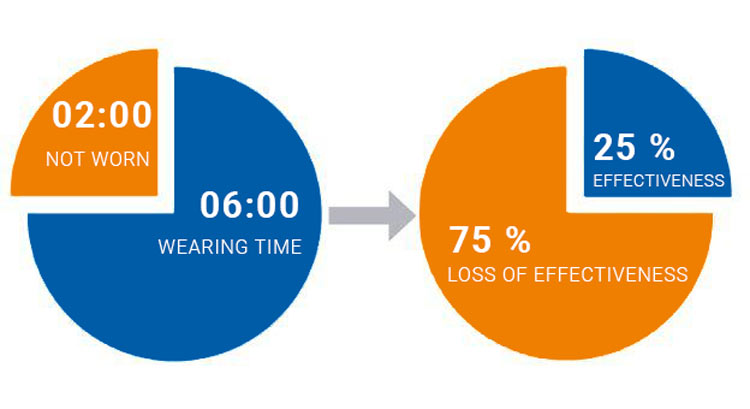
Communicating in noisy surroundings
So that your employees wear their hearing protection 100% of the time when exposed to noise, they need comfortable hearing protection that also lets them communicate verbally without having to take it off. This is optimal wearing of hearing protection with the risk of occupational hearing loss under far better control.
For example, in a printing works, employees need to be able to share information about printing qualities or instructions, even when they're near conveyors or folding machines.
Perceiving the environment
Protecting their hearing mustn't expose your employees to dangerous situations in terms of other risks connected with their work station. They must still be in contact with alarm signals and be aware of the equipment around them in order to avoid workplace accidents.
For example, in a logistics warehouse, employees must be able to hear moving trolleys.
Integrating sector-specific needs
Some sectors follow very precise specifications to comply with norms and standards. Compliance is essential for safety reasons.
For example, the agri-food industry requires that earplugs are blue in colour with a detectable bead and a cord so they don't fall off and aren't mistaken for food. Employees working in the paint industry should not work with silicone protective devices because of the risk of interaction with chemical products.
Respecting job requirements
Your company is bound to have workstations with specific requirements in terms of listening or accessories (handles or cords etc.). When these are taken into account before a choice is made about hearing protection, the affected employees will feel that they have been listened to and will be on board with your prevention initiative.
For example, a machine tool operator needs to be able to hear the precise sound of a machine in order to detect malfunctions while still being protected.
Taking technological constraints into account
A job may also have technological constraints. So it's imperative that they're taken into account so that your employees wear their hearing protection 100% of the time when exposed to noise.
For example, on construction sites your employees may need to adapt a walkie-talkie or phone communications system.
Are moulded earplugs your solution?
Hearing loss is one of the most widespread of occupational diseases with over 800 cases reported each year. This hearing loss is irreversible and has a number effects on your employees: loss of hearing and alertness, stress, anxiety and social isolation. If the risk to your employees' hearing health is very real, the same can also be said for the financial health of your company. Indeed, the cost of occupational hearing loss is on average 100,000 euros.
So it's essential to act now and protect your employees from this affliction by investing in custom-made hearing protection.
Invest today for better protection tomorrow
The purchase cost is often an essential element in the choice of custom hearing protection, the objective being to find the most cost effective solution. By limiting yourself to these parameters, standard custom hearing protection like preformed earplugs, mouldable earplugs or headphones may seem more attractive than moulded earplugs.
But these protectors have two problems:
Standard custom hearing protection is not effective
It is difficult to insert and presents problems in terms of comfort and over-insulation. As a result, it can't be worn over the whole exposure period, thus endangering your employees' hearing.
Standard custom hearing protection is not economic
The unit price for this kind of protection is attractive. But if you compare the investment that it represents against 6 years of warranty for a moulded earplug, any notion of an economic advantage unravels.
According to the study "Choosing Custom Hearing Protection" led by HearingProTech, "custom-made protection seems to be the most attractive. Economic in the long term, comfortable, good compatibility with other equipment, good responsiveness to the constraints of the job and the working environment of employees."
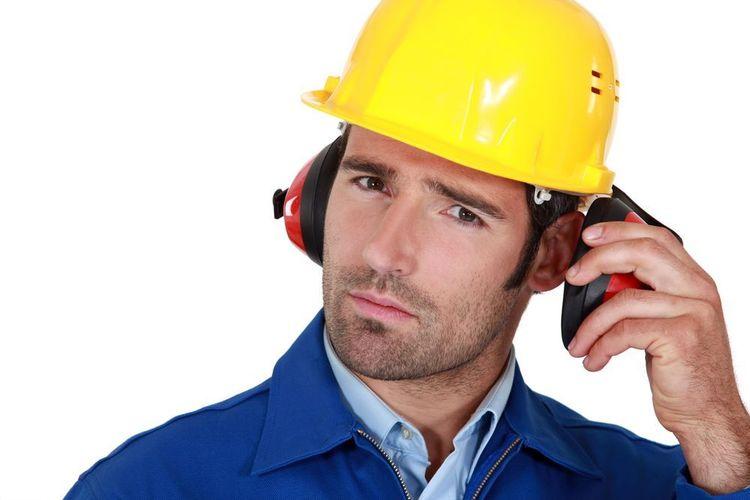
What are the most comfortable hearing protectors?
In the same study, HearingProTech experts set up a comparison table to compare the most suitable hearing protectors for each situation.
Comfort is an integral part of this table and consists of 3 criteria:
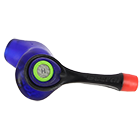
|
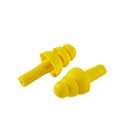
|
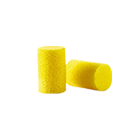
|
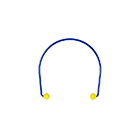
|
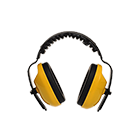
|
|
|---|---|---|---|---|---|
| Custom-made moulded earplugs | Preformed earplugs | Mouldable earplugs | Banded earplugs | Ear defenders | |
| Wearing comfort | |||||
| Pressure equalisation | |||||
| Suitable for hot/humid environments |
Source: HearingProTech
If your employees spend the whole day in contact with noise, custom-made hearing protection will be the most comfortable and therefore the most likely to be worn 100% of the exposure time.
Are your employees happy with their current custom hearing protection?
Satisfaction is the key to wearing hearing protection 100% of the time when exposed to noise
Hearing protection that is difficult to put on or take off, the feeling of being isolated, an inability to communicate, etc. All these sources of dissatisfaction often have the same outcome for your employees: they don't wear their hearing protection 100% of the time when exposed to noise and so put their hearing health at risk.
To mitigate these risks, it's essential to choose a type of custom hearing protection that is adapted to their needs and habits:
- If they spend all day exposed to noise, their protection must be comfortable
- If they need to communicate, they must be able to do so without removing their protection
- If they are not exposed to noise on a regular basis, they must be able to put on and take off their protection easily
If your employees are satisfied with their personal protective equipment and are aware of the risks associated with noise, wearing the protective equipment becomes routine.
Improving through communication
Before you compare the custom hearing protection that's available on the market, carry out a full assessment of the hearing protection currently worn by your employees. Collect their opinions, expectations and needs:
- Are they satisfied with their personal hearing protection?
- Do they wear it 100% of the time when exposed to noise? If not, why not?
- If they had a choice of hearing protection, which one would they choose?

